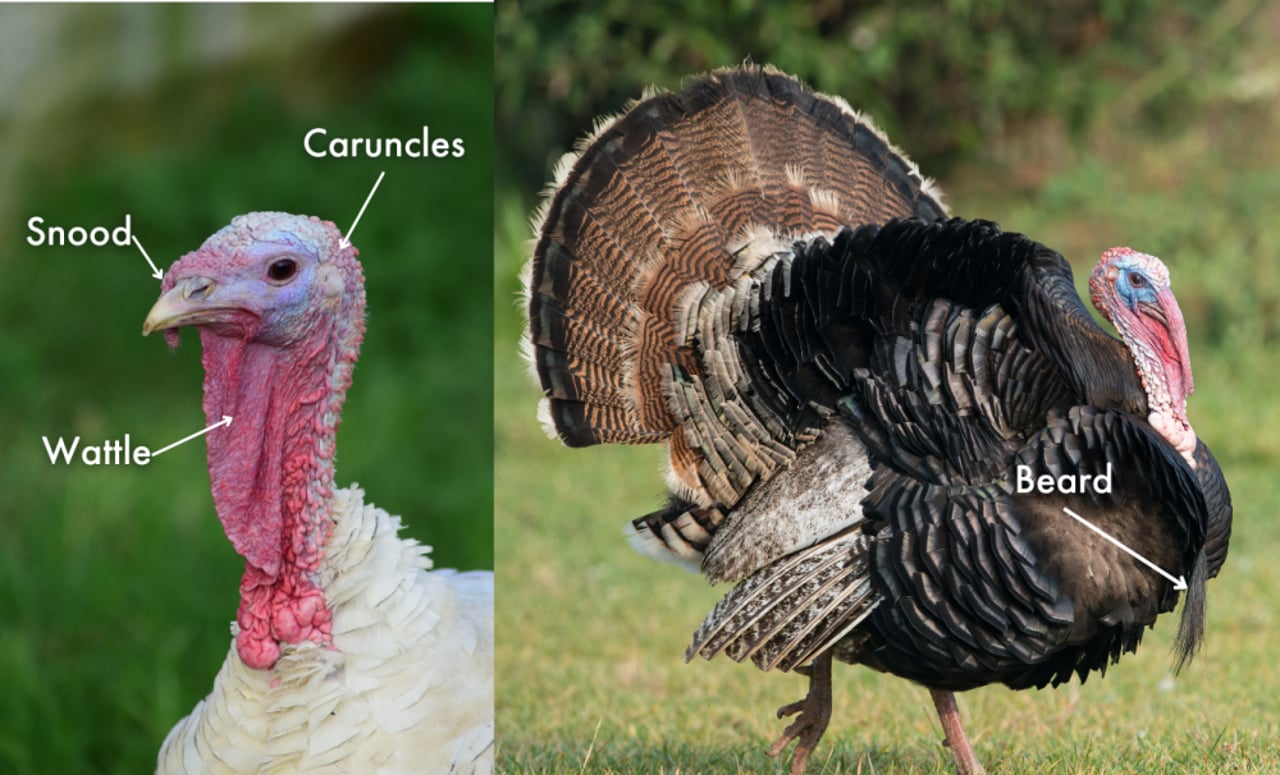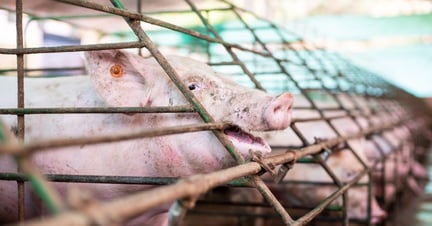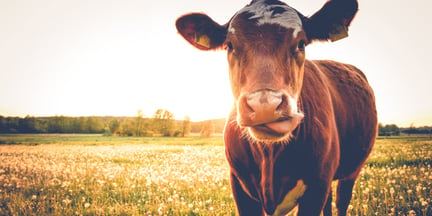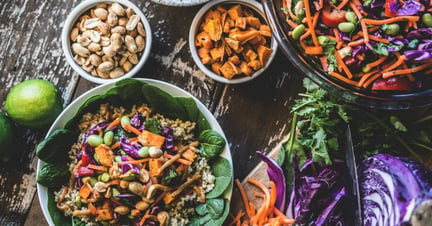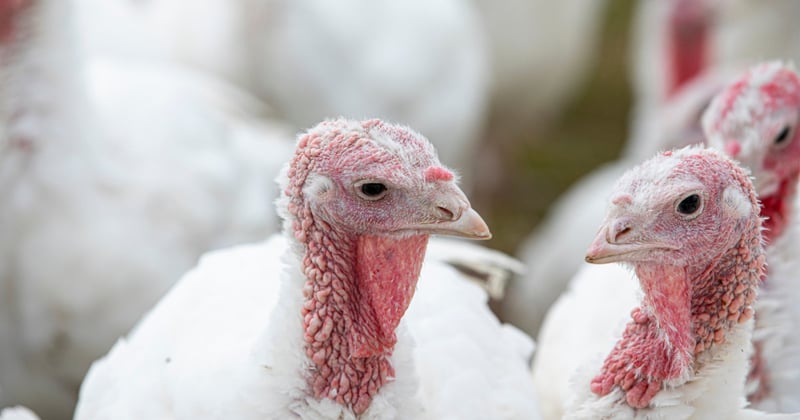
Turkeys are fascinating birds with unique traits, including the ability to change the colour of their heads to convey emotions and exceptional vision. They also have some distinctive features like snoods, wattles, and caruncles... what are those? Read on to find out!
Here are nine of the most interesting turkey facts:
1. Wild turkeys can fly
It’s a common myth that turkeys can’t fly (most likely because they feed on the ground), but wild turkeys have been known to fly up to 55 mph (or about 88 km/h) in short bursts!
For domesticated turkeys, this is unfortunately not the case. They’re bred to be heavier in weight, almost twice as much as a wild turkey, and therefore are not great at flight.
Bonus fact: Male turkeys are called “gobblers” while females are called “hens.”
2. Their poop can tell you if they’re male or female 💩
One certain way to find out if a turkey is male or female is by checking their droppings! A male’s poop will be shaped like the letter J, while the female’s is more spiral-shaped.
3. Turkeys can see better than humans
Among the more surprising facts about turkeys is that they have three-times better vision than humans with 20/20 vision. They can also see in full color, and their eyesight covers 270 degrees (compared to us humans with a measly 180-degree vision!).
4. Wild turkeys sleep in trees
Wild turkeys spend most of their time on the ground, but when it’s time to sleep, they fly up into trees. This is because while they have great day-vision, turkeys can’t see well at night, and to protect themselves from predators, they roost in trees at dusk and fly down at dawn.
5. Turkeys eat rocks for digestion
This may sound strange, but since turkeys don’t have teeth, they swallow small rocks to aid in the mechanical digestion of their food.
Bonus fact: They also have TWO stomachs – the glandular stomach and the gizzard!
6. They can change colours according to their mood
Well, their heads do at least! You can tell a male turkey’s emotions by the colour of their heads. Colours can change from red to blue to white, depending on how excited or calm they are. The more intense the colors are, the more intense their emotions.
7. Turkey snoods are for mating
Snoods, the fleshy appendage that extends over a turkey’s beak, is for finding a suitable mate. According to the Journal of Avian Biology, females prefer males with longer snoods, and snood length can also be used to predict the winner of a competition between two males! The snood can even extend and retract, and its size and colour are indicators of the turkey’s health and emotional state.
Sadly, removing their snoods in common practice in factory farms to prevent densely stocked turkeys from injuring each other.
8. Turkeys have wattles and caruncles
Turkeys also have fleshy growths on their necks called wattles and caruncles. Wattles are the small, red dangly bits that hang under the turkey's chin, while caruncles are the bulbous growths on the head and neck. Wattles are used for thermoregulation – birds can’t sweat, but this extra skin surface area allows the bird to release excess heat!
Bonus fact: Male turkeys even have beards!
9. Over 2 million turkeys are killed each year for Thanksgiving in Canada
Over a one-year period, Canadians purchase 2.7 million whole turkeys just for Thanksgiving. The number for the full year is as high as 6.1-million whole turkeys. And that’s just in Canada!
These beautiful animals are highly intelligent with distinct and playful personalities. If you’re thinking of skipping turkey this year, we’ve got you covered.
Banner photo: Richard Wozniak / Shutterstock
Sign up for our “Plan Meatless Better” campaign to receive a free, personalized recipe plan that will help you add a meatless day to your week. Simply answer a few short questions about your favourite foods and your meatless recipes will be sent directly to your inbox!
By choosing to eat less meat and more plant-based protein, we can transform our food system, improve our health, safeguard our planet, and improve the lives of billions of farmed animals (including turkeys!).
Get your plan
Try our meatless meal planner to reduce your carbon emissions while making food choices that help improve the lives of animals.
🦃
Further reading:
Why we should eat less meat
Blog
Eating less meat is good for the planet, good for animals, and good for your health.
One food choice that helps reduce suffering
1x1
Small changes to your diet can make a big impact. By simply making one day a week plant-based, you can make a difference for animals, your budget, your health, and the planet.
How World Animal Protection eats more plant-based
Blog
Learn how World Animal Protection staff are eating more plant-based by incorporating easy (and tasty) alternatives into their week!
